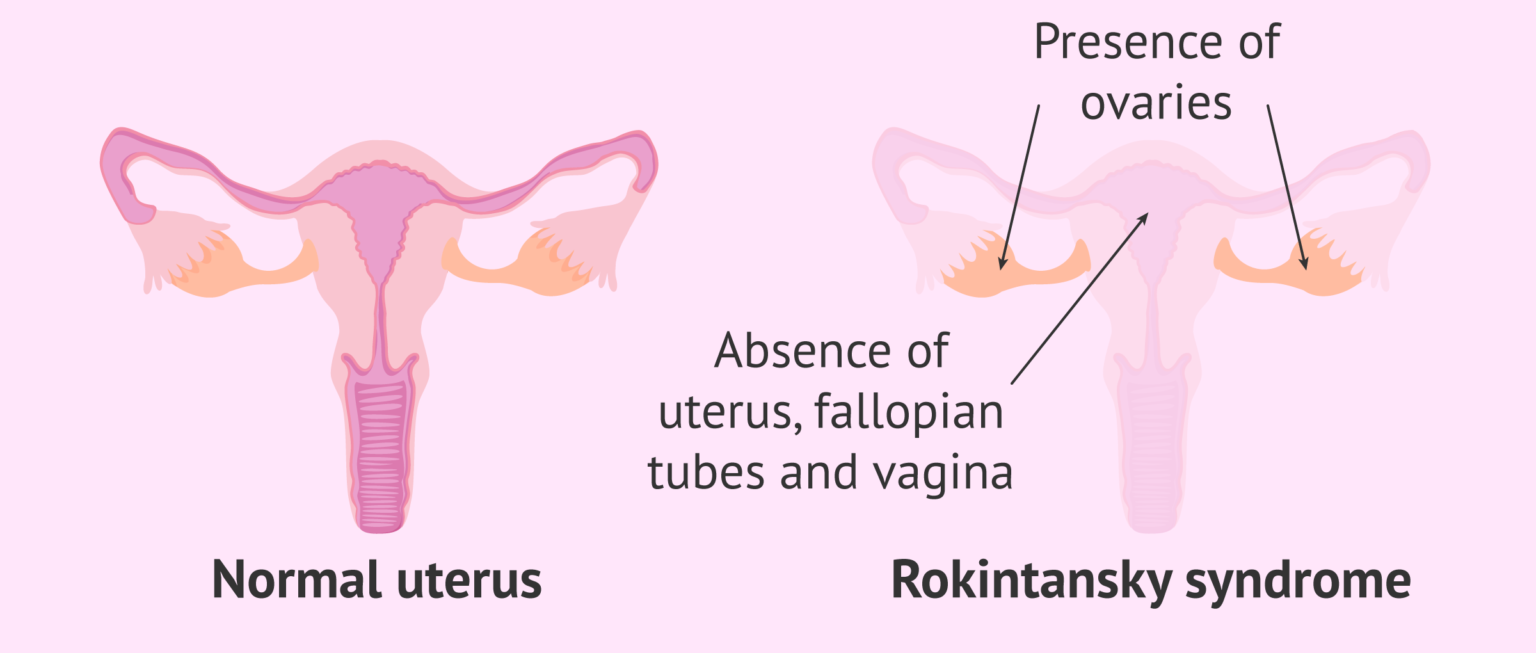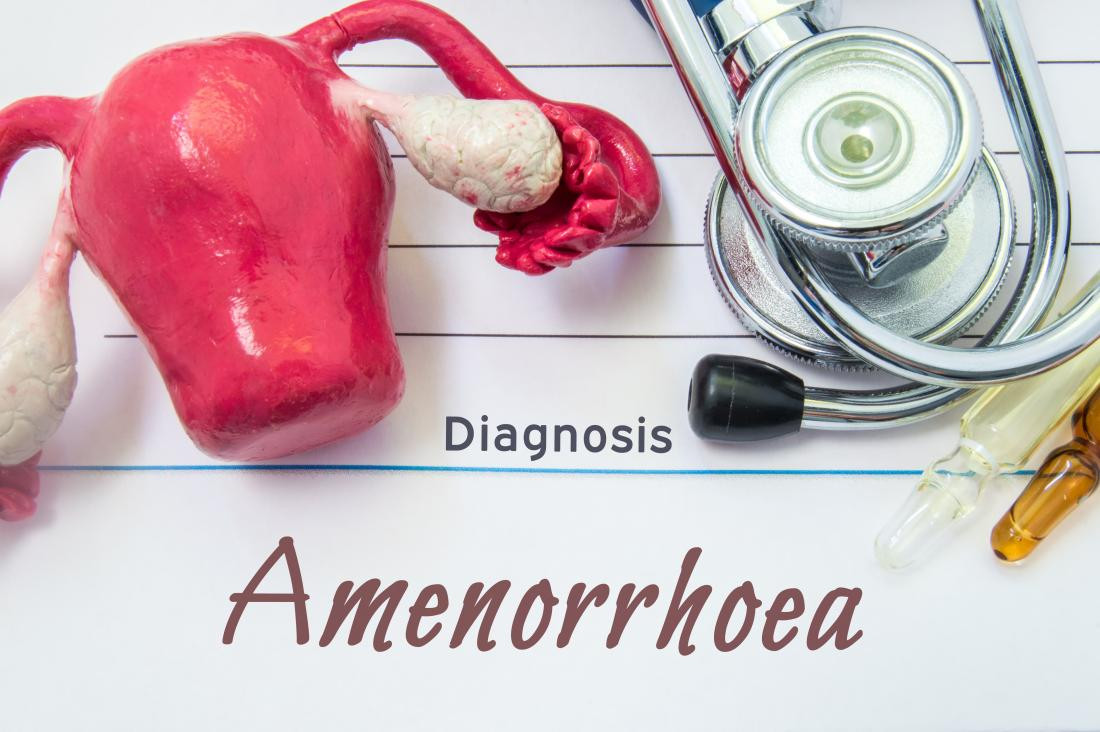Definisi
Amenore sekunder terjadi ketika seorang wanita yang sudah pernah haid sebelumnya tidak haid selama 3 siklus atau lebih secara berturut-turut.
Penyebab
Beberapa amenore sekunder merupakan hal yang cukup normal terjadi, seperti saat sedang hamil, menyusui ataupun saat menopause merupakan amenore alami. Namun beberapa amenore lainnya merupakan efek samping dari obat-obatan atau tanda adanya penyakit yang mendasari. Berikut beberapa penyebab dari amenore sekunder:
- Kontrasepsi. Pada beberapa orang pil kontrasepsi dapat menyebabkan amenore. Bahkan setelah menghentikan penggunaan pil kontrasepsi, akan membutuhkan beberapa waktu sampai siklus menstruasi kembali normal. Alat kontrasepsi lainnya seperti KB suntik, KB implan ataupun IUD dapat menyebabkan amenore.
- Obat-obatan. Berikut obat-obatan yang menyebabkan amenore:
- Antipsikotik
- Kemoterapi kanker
- Antidepresan
- Obat penurun tekanan darah
- Obat anti alergi
- Faktor gaya hidup. Gaya hidup dapat mempengaruhi siklus menstruasi. Beberapa contohnya adalah:
- Berat badan rendah. Berat badan yang rendah (10% di bawah BB normal) dapat mengganggu fungsi-fungsi hormon dan dapat berpotensi mengganggu ovulasi. Wanita yang mengalami gangguan makan, seperti anoreksia atau bulimia, sering mengalami gangguan pada siklus menstruasi karena perubahan hormonal.
- Olahraga berlebihan. Wanita yang berpartisipasi dalam aktivitas yang membutuhkan latihan yang berat, seperti ballet, atau atlit, dapat mengalami gangguan siklus menstruasi. Massa lemak tubuh rendah, stress dan tingginya pemakaian energi pada atlit menjadi faktor amenore sekunder.
- Stres. Stres psikologis dapat mengubah fungsi hipotalamus, yaitu area pada otak yang berfungsi mengontrol hormon dan siklus menstruasi. Ovulasi dan menstruasi dapat terhenti karena hal tersebut.
- Ketidakseimbangan hormon. Banyak kondisi medis yang dapat menyebabkan ketidakseimbangan hormon, yaitu:
- Sindrom ovarium polikistik atau polycystic ovary syndrome (PCOS). PCOS menyebabkan kadar hormon reproduksi yang terus menerus tinggi, dibandingkan dengan kondisi normal.
- Gangguan pada tiroid. Hipertiroid atau hipotiroid dapat menyebabkan gangguan siklus menstruasi, termasuk amenore.
- Tumor pituitari. Tumor jinak (non kanker) pada kelenjar pituitari dapat mempengaruhi regulasi hormon menstruasi.
- Menopause dini. Menopause biasanya dimulai pada usia sekitar 50 tahun. Namun, pada beberapa wanita, jumlah sel indung telur berkurang sebelum usia 40 tahun dan menstruasi berhenti.
- Perubahan pada jaringan. Adanya masalah pada organ reproduksi juga dapat menyebabkan amenore. Contohnya adalah jaringan parut atau jaringan bekas luka pada rahim. Sindrom Asherman adalah sebuah kondisi dimana jaringan parut terbentuk pada lapisan dalam rahim yang dapat terjadi setelah prosedur kuretase, cesarean section, atau terapi tumor rahim. Jaringan parut pada rahim akan mencegah penebalan dan peluruhan dinding rahim yang normalnya terjadi saat menstruasi.
Faktor Risiko
Faktor-faktor yang dapat meningkatkan risiko mengalami amenore meliputi:
- Riwayat keluarga dengan amenore.
- Gangguan makan. Adanya gangguan makan, seperti anoreksia atau bulimia memiliki risiko lebih tinggi untuk menderita amenore.
- Latian atlit. Latihan atlit yang berat dapat meningkatkan risiko terjadinya amenore.
- Riwayat operasi atau tindakan pada rahim, seperti kuretase, dapat meningkatkan risiko terjadinya amenore.
Gejala
Beberapa tanda dan gejala yang dialami berkaitan dengan penyebabnya. Selain menstruasi yang terhenti, berikut gejala lain yang dapat dialami pasien:
- Keluarnya cairan seperti susu dari puting
- Rambut rontok
- Nyeri kepala
- Gangguan penglihatan
- Rambut wajah yang berlebihan
- Nyeri panggul
- Jerawat
Diagnosis
Untuk dapat mendiagnosis amenore, dokter akan melakukan wawancara medis dengan pasien. Setelah mendapatkan informasi yang cukup pada wawancara medis, dokter akan melanjutkan pemeriksaan dengan pemeriksaan fisik.
Pemeriksaan fisik dilakukan dengan memeriksa panggul dan melihat apakah ada kelainan pada organ reproduksi pada pasien. Amenore dapat menjadi tanda dari masalah hormon yang lebih kompleks. Untuk menemukan penyebabnya akan memerlukan waktu dan dapat membutuhkan lebih dari satu pemeriksaan penunjang.
Pemeriksaan yang dapat dilakukan adalah:
- Pemeriksaan darah yang terdiri dari:
- Pemeriksaan kehamilan. Hal ini bisa merupakan pemeriksaan pertama yang disarankan oleh dokter, untuk menyingkirkan atau mengkonfirmasi adanya kemungkinan kehamilan.
- Pemeriksaan fungsi tiroid. Mengukur jumlah thyroid stimulating hormone (TSH) pada darah dapat menilai apakah kelenjar tiroid bekerja dengan normal.
- Pemeriksaan fungsi indung telur. Mengukur jumlah follicle stimulating hormone (FSH) pada darah dapat menentukan apakah adanya gangguan pada indung telur.
- Pemeriksaan prolaktin. Rendahnya kadar hormon prolaktin dapat menjadi tanda dari tumor kelenjar pituitari.
- Pemeriksaan hormon testosteron. Adanya peningkatan rambut halus di wajah atau suara yang lebih rendah, dokter mungkin akan memeriksa kadar hormon testosteron pada pasien.
- Tes percobaan hormon. Pada tes ini, pasien akan diminta untuk minum obat hormonal selama 7 sampai 10 hari untuk memicu menstruasi. Hasil dari tes ini akan menunjukan apakah menstruasi terhenti karena kekurangan hormon estrogen.
- Pemeriksaan radiologi. Bergantung pada tanda dan gejala yang dialami dan hasil pemeriksaan darah, dokter dapat merekomendasikan satu atau lebih pemeriksaan radiologi seperti:
- Ultrasonografi (USG). Pemeriksaan ini untuk menunjukan adanya abnormalitas pada organ reproduksi.
- Pemeriksaan MRI untuk melihat adanya tumor pituitari.
- Jika pemeriksaan lain tidak menunjukan adanya penyebab spesifik, dokter mungkin akan menyarankan histeroskopi, sebuah pemeriksaan dimana selang tipis fleksibel yang dilengkapi kamera akan dimasukan melalui vagina dan leher rahim untuk melihat bagian dalam dari rahim.
Tata Laksana
Terapi amenore sekunder bergantung pada penyebabnya. Pada beberapa kasus, penggunaan pil kontrasepsi atau terapi hormon lainnya dapat mencetuskan kembalinya siklus menstruasi.
Amenore yang disebabkan oleh kelainan kelenjar tiroid dan pituitari dapat diobati menggunakan obat. Namun, jika amenore sekunder disebabkan karena tumor atau perubahan jaringan pada rahim, maka operasi menjadi pilihan terapi.
Komplikasi
Penyebab dari amenore juga dapat menyebabkan permasalahan lain yang meliputi:
- Gangguan kesuburan dan masalah dengan kehamilan
- Osteoporosis dan penyakit jantung pembuluh darah
- Nyeri panggul
Pencegahan
Beberapa faktor gaya hidup, seperti olahraga berlebihan atau makan terlalu sedikit dapat menyebabkan amenore. Oleh karena itu, usahakan untuk menjaga keseimbangan antara bekerja, olahraga, rekreasi, dan istirahat. Mintalah bantuan pada keluarga, teman, ataupun dokter jika stres tidak dapat diatas sendiri. Kelola stressor yang baik dapat mencegah terjadinya amenore.
Kapan Harus ke Dokter?
Anda sebaiknya berkonsultasi ke dokter jika Anda tidak mengalami menstruasi selama 3 kali berturut-turut.
Mau tahu informasi seputar penyakit lainnya? Cek di sini, ya!
- dr Vivian Keung
Amenorrhea - Symptoms and causes. (2022). Accessed October 6, 2022, from https://www.mayoclinic.org/diseases-conditions/amenorrhea/symptoms-causes/syc-20369299
Lord, M., & Sahni, M. (2022). Secondary Amenorrhea. Accessed October 6, 2022 , from https://www.ncbi.nlm.nih.gov/books/NBK431055/
Secondary Amenorrhea: Causes, Symptoms, and Diagnosis. (2022). Accessed October 6, 2022, from https://www.healthline.com/health/secondary-amenorrhea.











